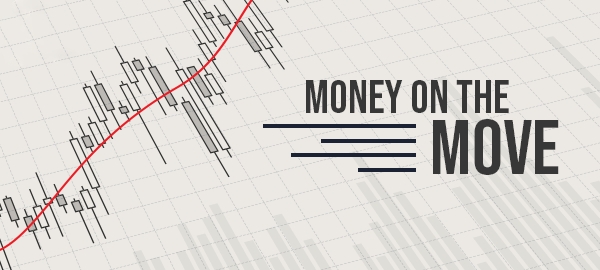
With lockdowns in place across many parts of the country, the usually busy Spring selling season is likely to play out differently this year.
Both sales and listing volumes may fall if the lockdowns persist. In Greater Melbourne, the ACT and NSW, we are seeing declines in transaction activity.
The good news is that once restrictions are eased, we will likely see listing volumes rise rapidly and newly advertised stock recover remarkably quickly, as was the case in Melbourne in October 2020. Sales activity has also been shown to recover strongly after extended lockdowns.
In areas affected by lockdowns, we may even see the spring selling season ‘pushed back’ into the summer months, if restrictions are eased by then.
Interest rate news
At its September meeting, the Reserve Bank of Australia (RBA) held the official cash rate at 0.10 per cent. The RBA’s decision was widely anticipated.
Last month, RBA Governor Philip Lowe said the board would not increase the cash rate until actual inflation was within the 2 to 3 per cent target range – a condition that will not be met before 2024. Meanwhile, a growing number of economists have speculated we could see a rise earlier than that.
Lowe noted that housing markets continued to strengthen, with prices rising in all major markets and strong credit demand from owner-occupiers, plus increased borrowing by investors.
Home value movements
Australian property prices continued to grow last month, but experts are warning the market is losing steam as affordability worsens.
“Along with declining home affordability, much of the earlier COVID related fiscal support (particularly fiscal support related to housing) has expired,” CoreLogic research director Tim Lawless said.
“It is however, encouraging to see additional measures being rolled out for households and businesses as the latest COVID outbreak worsens.”
“On the flip side, demand is being stocked by record low mortgage rates and the prospect that interest rates will remain low for an extended period. Dwelling sales are tracking approximately 40% above the five-year average while active listings remain about -26% below the five-year average. The mismatch between demand and advertised supply remains a key factor placing upwards pressure on housing prices,” Mr Lawless said.
| All dwellings | Auctions | Clearance rate | Private sale | Monthly home value change |
|---|---|---|---|---|
| VIC | 358 | 89% | 1163 | ▲ 1.29% |
| NSW | 308 | 87% | 1592 | ▲ 1.95% |
| ACT | 71 | 96% | 44 | ▲ 2.63% |
| QLD | 157 | 76% | 1319 | ▲ 2.00% |
| WA | 4 | 0% | 678 | ▲ 0.32% |
| NT | 6 | 17% | 30 | ▲ 1.66% |
| TAS | 2 | 100% | 168 | ▲ 1.74% |
| SA | 57 | 98% | 297 | ▲ 1.68% |
* Monthly Home Values figures as of 31 August 2021
* Australian auction results, clearance rates and recent sales for the week ending 5 September 2021.
* The clearance rate is preliminary and current as of 03:07 pm AEST, 6 September 2021.
If you’re considering buying a home or investment property this Spring, speak to us about your finance options.
Get in touch today!
Additional sources
CoreLogic RP Data Daily Home Value Index: Monthly Values
Wealth News & Light Reading

September 2021 Investment Committee meeting, we wish to advise that our current view of the market moves to:

The move reflects the recent price corrections we have observed from both domestic and global share markets and the better profit reporting season. As we have communicated in our previous emails, some corrections would be healthy for the market in the short term. It would bring valuations to less expensive levels and represent a buying opportunity given that both monetary and fiscal policy remains ultra-loose. Australia’s reporting season delivered more upgrades than downgrades and suggests markets are pricing an upbeat outlook. How long the current lockdown lasts, and how strong the economy will be as we cycle from a period of strong fiscal stimulus remains to be seen. Accelerating vaccination rates and greater clarity on a path to reopening the economy are allowing investors to look through the weakness in the second half of the year to a still robust outlook for the economy and earnings in 2022. In Australia, the economy is likely to be near or in recession once again with many on life support from the government. The RBA announced that it would taper its asset purchases from September but extend the reduced rate until February 2022. The decision reflected the Board’s view that ‘the Delta outbreak is expected to delay, but not derail, the recovery’, and the economy would recover to its pre-Delta path in the second half of next year. Global growth is slowing following a strong bounce back from the depths of COVID 19. The Federal Reserve remains supportive, and evidence of sustainable inflation will take time to emerge. In Europe, the European Central Bank revised its guidance on when interest rates might rise to convince investors it will not withdraw support too quickly and derail the economic recovery. The key change to the guidance means that even if inflation is at the target at the end of the three-year forecast horizon, officials won’t be forced to respond with tighter policy. The Chinese economy appears to be losing steam hit by flooding, higher input prices, curbs on the property sector and polluting industries, and the recent flare-up in domestic Covid-19 cases leading to renewed mobility restrictions. The recent collapse of Chinese developer Evergrande also presents an unforeseen risk to the iron ore market with companies such as BHP, RIO and Fortescue being adversely impacted. We watch the development here closely as it may have wider ramifications than just the iron ore sector. Specifically, systemic risk and a deflationary pulse for the Chinese economy. Again, the outlook for the share market hinges on the interest rate outlook which itself has become less clear in light of the outbreak of the Delta variant around the world. The catalysts for an unwind of the valuation excesses are hard to see outside the bond yield story. Both the monetary and fiscal policy settings in Australia like the rest of the world will remain highly accommodative. Our best estimate of the ASX 200 fair value has been upgraded to 6800 points and to 3800 for S&P 500 to the end of September 2022. Kind regards, Emmanuel Calligeris The information has been provided as general advice only. It is for use by licensed financial advisers only. The contents have been prepared without taking account of an investor’s objectives, financial situation or needs and are not intended to be used for any speculative trading activities. Whilst GPS Wealth Ltd is of the view the contents of this report are based on information which is believed to be reliable, its accuracy and completeness are not guaranteed and no warranty of accuracy or reliability is given or implied and no responsibility for any loss or damage arising in any way for any representation, act or omission is accepted by GPS Wealth Ltd or any officer, agent or employee of GPS Wealth Ltd. |
Coronavirus and a roadmap for infected investing
- Roger Montgomery
- 11 March 2020
- 9
(Update on 15 March 2020. The numbers in Roger’s article were up-to-date on Wednesday 11 March 2020. While we will not rewrite the article, it is noteworthy that Italy had a spike in new virus cases and deaths at the end of the week, and the US (especially Donald Trump) is finally reacting seriously by declaring a national emergency. As Roger observes, developments in the US in the coming weeks will be a major factor in how markets perform. We now know coronavirus will have lasting impacts on the way business and society operates in future).
With the data changing daily, the only things moving faster than the spread of coronavirus are the financial markets. In this exclusive note for Firstlinks, we explore the possible paths the stock market might take in the next few weeks and months, noting short-term predictions are a very high-risk venture.
This too shall pass
Indeed, on the subject of short-term predictions, it’s worth sharing the 19th-century retelling of a Persian fable by both the English poet Edward FitzGerald and US President Abraham Lincoln.
When an Eastern sage was desired by his sultan to inscribe on a ring the sentiment which, amidst the perpetual change of human affairs, was most descriptive of their real tendency, he engraved on it the words: “And this, too, shall pass away.”
FitzGerald retold it thus:
“It is said an Eastern monarch once charged his wise men to invent him a sentence, to be ever in view, and which should be true and appropriate in all times and situations. They presented him the words: “And this, too, shall pass away.” How much it expresses! How chastening in the hour of pride! How consoling in the depths of affliction!”
When considering how deeply the world might be afflicted by Covid-19 it is worth remembering that we will not even be talking about it in five years’ time. Acknowledging the tragedy that the outbreak has already wrought on families all over the world is important. Notwithstanding, humans are resilient and adaptable and a solution will be found. When we look back, the virus will have been contained, a vaccine developed, and the world will move forward.
The viral and financial market contagions that could occur in the interim, and which have been demonstrated already, are worth considering, if only to try and anticipate when it might be best to venture a purchase of shares at prices that may not be revisited for a decade.
We care about the answers to this question deeply if only because, like Berkshire Hathaway, we also approach the crisis with about 30% of our portfolios in cash.
The success story in South Korea
We have been tracking the data daily, including the number of tests being conducted. This is important because you only find something when you are looking for it.
South Korea has published 183 updates since the start of the outbreak. This may be a function of their level of concern, which itself is a function of the country’s proximity to China. Regardless, at some point they realised they had a problem and began testing in earnest. As at the time of writing, South Korea has conducted 4,000 tests per one million head of population, or 210,000 tests in 10 days.
As a result of the tests, South Korea has produced a detection rate of 3.58% (obviously the infection rate is higher because not everyone is being tested and many are quarantining themselves at home).
Table 1. South Korea

Source: Montgomery Small Companies Fund
As the data in Table 1 reveals, of the 210,000 tests, 7,513 have been confirmed with Covid-19 (3.58%). Of the 7,513 confirmed cases, 54 people (0.7%) have died, 96% have been quarantined and 3.3% have been discharged. Given that testing is continuing and that there is a large cohort who have been quarantined and are therefore unresolved the fatality rate of 0.7% is likely to go up.
But South Korea’s story is one of relative success, being able to isolate the outbreak to a death cult, and thye rapidly ramped up their testing.
The challenge in Italy
Italy, by contrast, is a basket case and the poster child of the consequences of a poor response.
As we write this note, Italy is experiencing the first economically and socially significant outbreak outside of China and South Korea. Italy is also the first liberal democracy to enforce a country-wide lockdown. Until today, the country had implemented a haphazard approach to lockdowns, confined to the Lombardy region. I say ‘haphazard’ because eyewitnesses at the sieve-like boarder control roadblocks reported cyclists and vehicles moving through the checkpoints unimpeded.
Italians turned up late to admitting there was a problem and consequently we have seen their numbers explode.
Italy today has only conducted a quarter of the number of tests per million (1000 tests/million population) that South Korea has conducted. And because those tests commenced late, they have been shocked to discover a detection rate of 16.7%. Italy only really started testing on 24 February with 4324 tests, but the number then fell away and it was not until 7 March that testing numbers again exceeded those earlier numbers.
As at today (10 March), the Italians have only tested 0.1% of their population and already they have experienced almost 12 times the number of deaths (631) as South Korea. As Figure 1 illustrates, this is the result of commencing and then scaling testing late.
Figure 1. Italian cumulative tests and positive results.

Source: Montgomery Small Companies Fund
Figure 2 makes an observation that should be troubling for the US and therefore for the markets. As the rate of testing goes up in a country that is late to commence, the number of confirmed cases understandably surprises.
Figure 2. Italian daily tests and confirmations

US is slow to move
To show how late the United States is to respond to the outbreak, the CDC (Centers for Disease Control and Prevention) has thus far reported only 26 tests have been conducted per million population. The US CDC spotted coronavirus in January but left it to public sector laboratories to develop a test. It has obviously taken some time because by the end of February, the US had averaged 92 tests per day in a country of 340 million people! Today, the testing is beginning to scale and 810 tests were conducted on 6 March 2020.
If they scale effectively, what will the US find? They will report a high detection rate, much higher than the 7.5% detection rate as of 10 March 2020. Of the 647 confirmed cases, 4.3% have died. This number will rise too. Italy appears to be offering a road map.
A limiting factor is that Amercians do not kiss each other as a greeting, the US population is younger and the frequency of smokers is lower. However, a large number of people could die.
Short-term implications for equity markets
So, is it time to start buying the dips in shares again? The answer is probably not. Of course, there will be companies that are affected by the virus directly and if their share prices overreact negatively at any time, investors should ask whether the company’s ills are being treated as permanent. If the market is treating the issue as permanent, but it proves to be temporary, an opportunity could be presented. Keep that in mind.
The US could soon experience a parabolic jump in the number of confirmed cases as they scale up their testing. This means broad-based value may yet be just around the corner.
Roger Montgomery is Chairman and Chief Investment Officer at Montgomery Investment Management. This article is for general information only and does not consider the circumstances of any individual.
